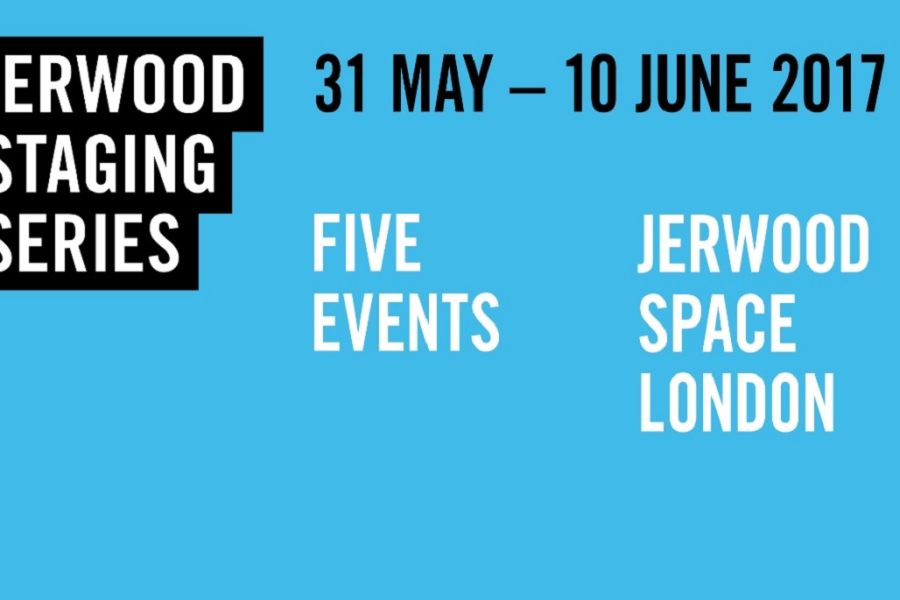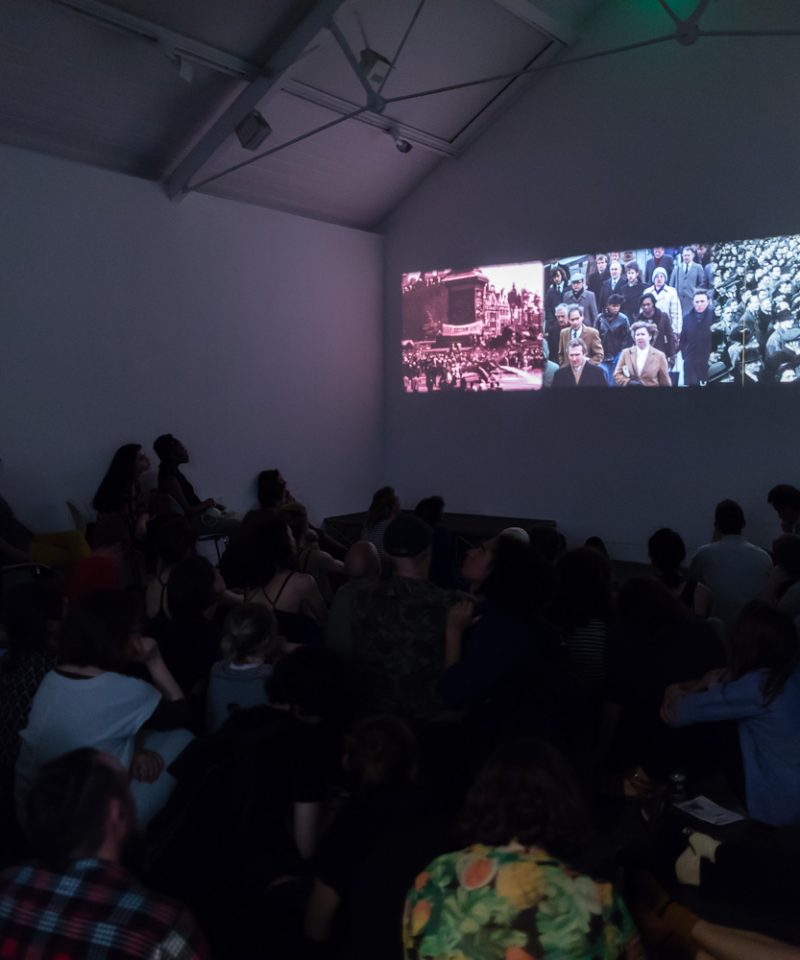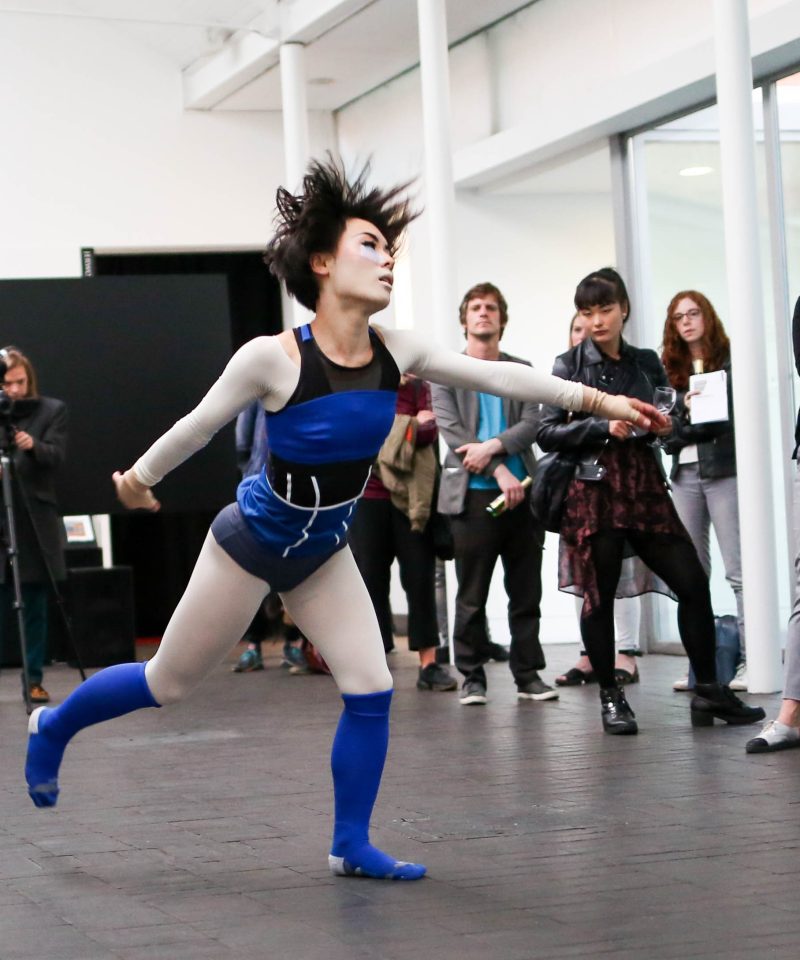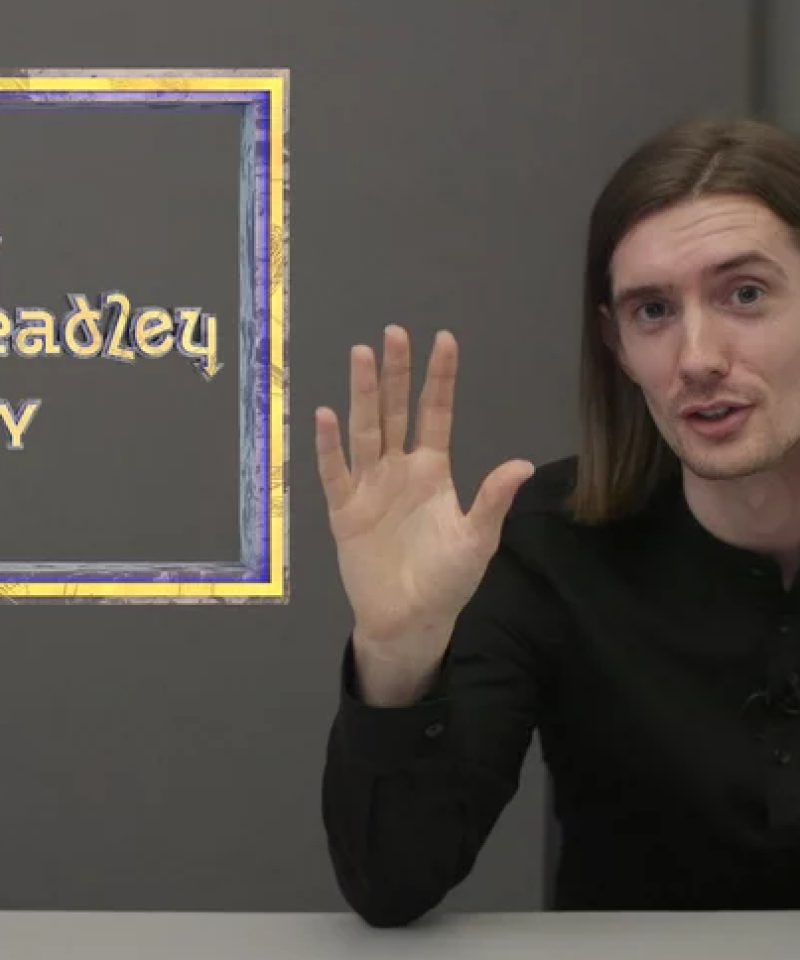“Touched.” The way that word sounds and the possible things it could mean. Does it make you think about being touched? By what? By tongs? By those machines that shoe shops use to measure the size of your foot? A letter in which an older woman asks younger woman all about her life; a song about splitting in two to keep yourself company; an image of a fingertip reflected in a pool of mercury as though stretching to form another digit.
So wrote Emily Wardill about James Richards’ installation Not Blacking Out, Just Turning The Lights Off, at Chisenhale Gallery in 2011. ‘It felt like communication’, she wrote, on the work’s affect. Being touched? By what? By history? How do we make contact with past events we are touched by, shaped, compelled, thrust forward? How do we reconcile ourselves with history’s influence, its presence within us? The four artists in The fin comes a little early this siècle make work of the past tentatively, favouring circumspect or slipshod remakes over smooth restaging, histories served at a remove, as if handled with tongs.
In Childe of Hale (2014, video) Richard Whitby returns to Hale, to reconstruct events around the life of a famous inhabitant John Middleton, born in 1578. Middleton was allegedly a giant of 9”3’, and Whitby brings together a range of townspeople to retell and re-enact his story, a choir of first person accounts telling of his childhood of social isolation to his adulthood of relative fame, summonsed to London to meet the king and fight his champion wrestler. But as the work evolves, there are lapses in dialogue, oblique camera angles, odd musical interludes and random apparitions of digitally animated hands and bodies. Contemporary perspectives and historical accounts overlap as characters are interviewed in both historical and modern day garb. It’s a purposeful narrative distortion that shows the transition from folk to folklore, how mythologies layer up as they’re collectively retold over centuries, and how vital they are to this heritage-obsessed country. Whitby’s is a knowingly shonky historicisation, a study of how stories bind the communities that tell them.
A more troubled approach to historical material appears in Faye Green’s absorbing, NOT TO DISCOU[RAGE] YOU (2013). The piece traces the artist’s preoccupation with the seminal dance piece Trio A, by Yvonne Rainer. Originally composed and performed in 1966, the performances of Rainer’s work are closely monitored, with only authorised instructors permitted to ‘transmit’ the dance at specific locations and times, ‘so’, Green has said, ‘I began to learn the dance illicitly, making the obstructions and restrictions part of the process… [the work] came out of that illicit process of learning.’ What is now a video but has also been, in the past, a performance by Green is a reconfiguration of Trio A, where its successive phrases are interrupted by poetic interludes, penned and voiced by Green. She articulates vocally and physically the allure of the dance’s notation and the frustration of its guardianship. I am reminded of Julia Bryan-Wilson’s essay ‘Practicing Trio A’ (October 140, Spring 2012), where the art historian writes an affectionate account of how physically taxing it was having to learn Rainer’s dance, and how it changed her perception of it entirely. Green’s seems to be Bran-Wilson’s essay’s equally fascinating but furious opposite. But beyond the particularities of Trio A, NOT TO… is a work about lineage, creative infatuation, physical compulsion and spontaneous rage.
Alex Culshaw’s two works Egremont Red (parts one and two) have a far more speculative relationship to historic material. In the first part, performed live, a performer reads aloud the artist’s relationship with the images on screen. There’s an abstract moving image projected before us: earth red background, with a swirling cloud of black billowing up from below. Culshaw is contemplating a moving image’s capacity to meet thought while still in abstraction. She considers Robert Smithson ‘truly “underground” cinema’, a sketch and an essay he developed in 1971, where “The projection booth would be made out of crude timbers, the screen carved out of a rock wall and painted white, the seats could be boulders.” Smithson’s structure is a play on the word ‘underground’, ultimately exploring the cinema goer’s sensory immersion. Culshaw adopts his conceit and sets her underground cinema in Cumbria’s Florence Mine, where a collective of artists have recently begun to make oil, watercolour and pigment from the particular shade of earth dust that once coated the miners before the shaft was shut down in 2008. It’s a dark extraction site in and from which Culshaw can film suitably ambiguous images. Upon their opaque surfaces, her metalogue challenges the distance between thought and image, between vision and utterance, between site and screen, and her viewer’s response. There’s also a serious reflection underpinning her exploration of iron ore mines, these sites where energy is extracted from the void, about the Herculean task of making art from nothing.
Guy Oliver leads us out of the programme with a video of himself singing Karaoke songs in an east London pub in What Do You Have To Do To Get A Drink Around Here? Part Two (2017). Oliver stands at a bar by the beer taps, microphone in hand, a neon piece of art hanging in the background. Stony-faced, he sings the Pet Shop Boy’s rendition of ‘Always On My Mind’ to the camera in this split screen projection. Oliver’s performance is nonchalant, stripped of emotion, blinking at us while he reels off the 1987 version, itself a blank cover of the original melodramatic country ballad. The combination of this blank-faced man singing a highly synthesized song where tone veers away from lyric, teeters on the cusp of obscurity, of being entirely without substance or center. But, like the mathematical rule of two negatives making a positive, the spectacle is rich, and strangely affecting. In the final work, Oliver assembles a classically trained choir to sing a cappella medley of familiar songs, football chants, advertising slogans, hotline numbers. Again, the viewing encounter is as captivating as it is alienating, as audience members we’re drawn in to the finely worked melodies and snapped out of it with unexpected cultural references, like one refrain about foreskin, for example.
And that duality of feeling immersed within the material while being repetitively estranged from it binds these works. We know we’re being served history with tongs, so that tentative, doubtful, angry or even nonchalant responses to it can be seen too. We are not encouraged to swallow these histories whole.





